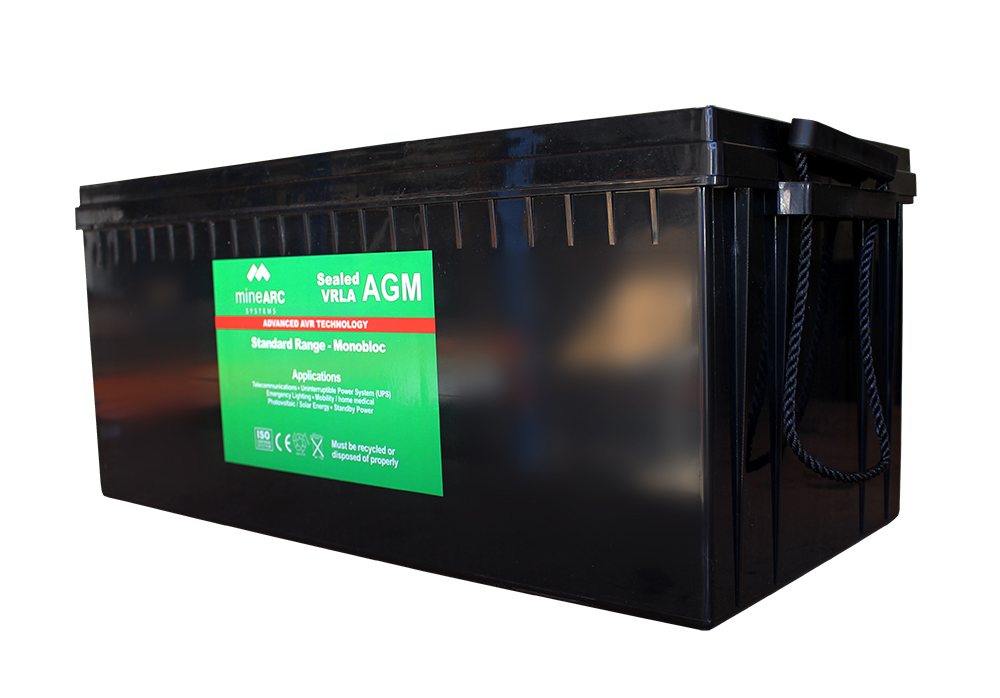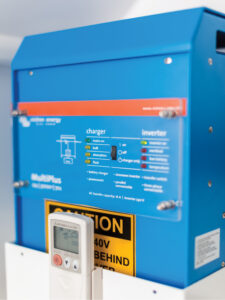Batteries in a refuge chamber are utilised in conjunction with the inverter/charger to provide a reliable Uninterruptable Power Supply (UPS). The batteries power the life support systems (including scrubbing units, air conditioning, and lighting) in the event of a loss of mains power.
Refuge Station Backup Power Guidelines
If power from the site’s electrical system fails, a backup supply (e.g. batteries permanently on a charge, rotated through service) is essential. Power redundancy requirements are stipulated in government regulations and safety standards. For mining, the 2017 Government of Western Australia’s Department of Mines, Industry Regulations and Safety guidelines, Refuge Chambers in Underground Mines.
The self-sustained operation of a refuge chamber needs to allow sufficient time for a rescue to be completed. In mining, 36 hours is the recommended duration.
Externally located refuge chamber batteries minimise the risk of explosions, fires or exposure to fumes.
Refuge Chamber Battery Types
Valve Regulated Lead Acid
A Valve Regulated Lead Acid (VRLA) battery utilises a one-way pressure-relief valve system. The oxygen normally produced on the positive plate is absorbed by the negative plate, suppressing hydrogen production at the negative plate and producing water. This process retains moisture within the battery.
Absorbent Glass Mat Batteries
Absorbent Glass Mat (AGM) is a class of lead-acid deep cycle battery. A sponge-like material suspends loose electrolytes within highly porous glass fibre mat separators, eliminating the hazards associated with acid spills and leaks.
AGM batteries are robust, completely sealed and are easy and safe to transport. The sealed design avoids the need for regular topping-up of electrolytes. AGM batteries work in high ambient temperatures, and have low internal resistance and low self-discharge rates, enabling faster recharge and longer shelf life.
MineARC OEM Refuge Chamber Batteries
Extensive testing occurs regularly on MineARC branded AGM batteries for refuge chambers. The charging and controller systems are calibrated for this specific battery type. The UPS system design ensures a refuge chamber’s standalone duration will meet the required Government specifications.
MineARC batteries have a robust casing for added protection in harsh industrial environments. A secure steel cabinet provides storage at the rear of portable refuge chambers or outside the main area for permanent refuge shelters. The battery monitoring sensors link to the refuge chambers digital control system and automatically alert occupants to any anomalies.

The batteries themselves are maintenance-free. However, regular testing and inspection are required to ensure refuge chambers can operate for the full safe-refuge duration. The safe-refuge duration is when critical life support systems will continue to operate after the mine compressed air or mains power supply fails; a minimum of 36 hours.
MineARC performs and recommends testing batteries as part of a comprehensive refuge chamber service every four months to ensure a refuge chamber and their interdependent technologies and components function optimally in standby mode and during an emergency; the battery bank and individual batteries, as well as each battery string, should be tested.
Battery Bank Configuration
The battery bank configuration of MineARC refuge chambers varies between each control system series and customer specifications. Generally, this is a 48-volt system comprising at least three strings of four batteries in series.
Compact Designs have a standby bank and an emergency bank of batteries, generally with a total of 8 batteries (2-Standby, 6-Emergency).
Power Inverter/ Charger
A power inverter is an electronic device or circuitry that changes direct current (DC) to alternating current (AC).
When mains power becomes unavailable, the UPS uses batteries and an inverter to supply AC power to the refuge chamber’s life support systems, ensuring a safe, breathable atmosphere within an occupied refuge chamber is maintained. When mains power is restored, a rectifier supplies DC power to recharge the batteries.








